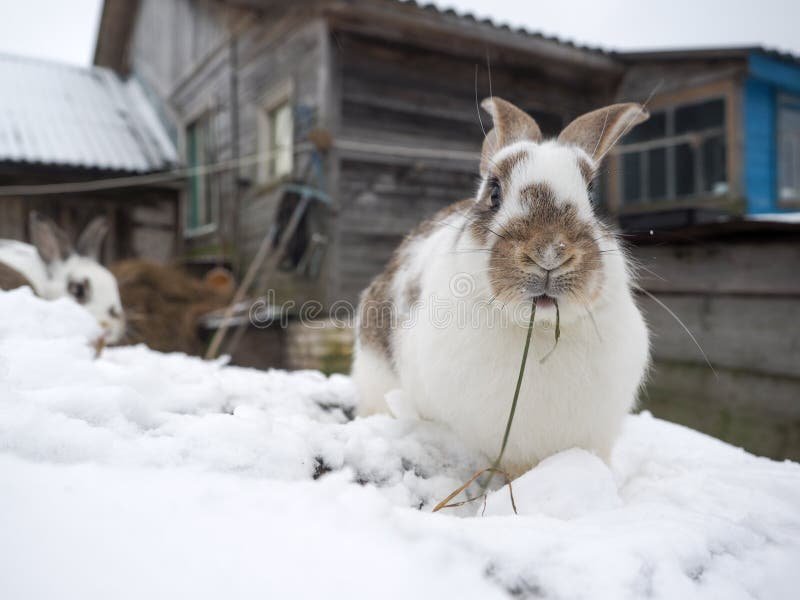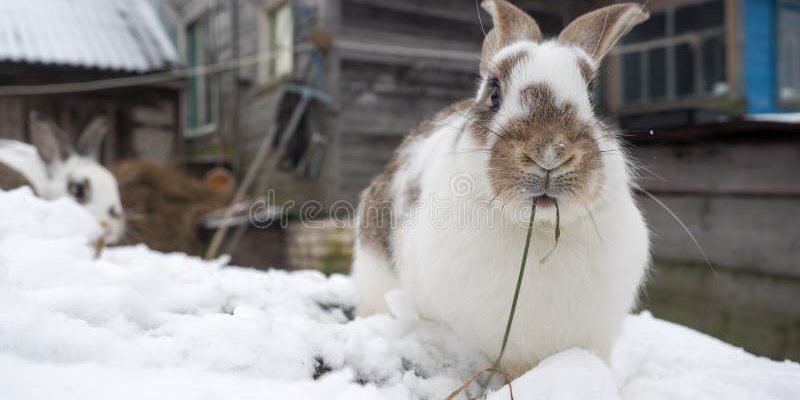
When we think of rabbits, we often picture a sunny field or a cozy garden. But these furry friends can be found in a wide range of environments, from deserts to snowy mountains. It’s fascinating how they manage to navigate such varied landscapes. So, let’s hop into the details of how rabbits survive in harsh environments.
Adaptations for Temperature Extremes
Rabbits are surprisingly good at adapting to temperature changes. In colder climates, you’ll notice that some rabbit species, like the Arctic hare, have thick fur that insulates them from biting winds and freezing temperatures. This fur acts like a cozy blanket, keeping them warm as they frolic in the snow. They also have a layer of fat under their skin that helps them stay warm, much like how we might wear a thick coat when stepping outside in the winter.
On the flip side, in hotter environments like deserts, rabbits have lighter fur that reflects sunlight, preventing them from overheating. The desert cottontail, for instance, has a tan coat that blends in with sandy landscapes, but it also helps keep them cool. They tend to be more active during the cooler parts of the day, like dawn or dusk, when the sun isn’t blazing down. You might be wondering how they find food during these times—well, they’ve got a pretty good sense of smell to guide them.
Burrowing: Their Safe Haven
One of the smartest moves rabbits make is digging burrows. Think of it as their own little apartment complex, designed specifically for comfort and safety. These burrows provide shelter from predators and harsh weather. When the wind howls or rain pours, rabbits can retreat to their cozy underground homes.
Burrows also help regulate temperature. In the heat of summer, the underground stays cool, while in the cold of winter, it’s much warmer than the outside. They can create complex tunnel systems with multiple entrances and exits, making it easier to escape if a predator is lurking nearby. Just imagine having a secret hideout that keeps you safe and comfortable—that’s what a rabbit’s burrow is.
Food Sources: A Diverse Diet
Surviving in harsh environments means being smart about food. Rabbits are herbivores and have a flexible diet, which helps them adapt to what’s available. In colder regions, they munch on bark, twigs, and even some frozen grasses. During the warmer months, they enjoy fresh greens, flowers, and herbs.
You might think they’re picky eaters, but not at all! Rabbits have a unique digestive system that allows them to extract maximum nutrition from tough plant materials. They even eat their own poop (yes, really!) to digest food a second time for extra nutrients. This behavior might sound gross to us, but it’s a smart survival strategy in the wild.
Alertness and Speed: Their Defense Mechanisms
Rabbits are prey animals, which means they need to be on high alert. They have excellent vision, allowing them to spot potential threats from far away. Their big ears can rotate independently, picking up sounds from all directions. Imagine having a built-in security system that helps you stay aware of your surroundings!
Speed is also crucial for survival. Rabbits can sprint at speeds of up to 35 miles per hour to escape predators. But, it’s not just about speed—rabbits are also great at changing direction quickly, which helps them evade capture. It’s like playing a game of tag where you can twist and turn on a dime to avoid being “it.”
Social Structure: Living in Groups
In many rabbit species, especially those living in harsher climates, social structure plays a critical role in survival. Living in groups allows rabbits to keep watch for predators while also sharing information about food sources. It’s a bit like having a built-in support system.
When one rabbit senses danger, it can alert the rest, and they all take cover. This teamwork is crucial for survival in environments where predators are lurking, ready to pounce. Those little alarm calls can save lives—literally! Plus, socializing helps reduce stress, which is important in harsh conditions.
Behavioral Adaptations: Activity Patterns
Rabbits have smart behaviors that help them cope with their surroundings. For instance, they tend to be more active during twilight hours, known as crepuscular behavior. This means they’re out and about when it’s cooler and safer from predators that are more active during the day or night.
You might notice that some rabbits are more cautious and avoid certain areas during the day—this is just them being smart about their safety. Their ability to adjust their activity patterns based on the environment helps them find food while minimizing risk.
Rabbits are true survivalists with a range of smart adaptations to help them thrive in harsh environments. From their fluffy coats to their stealthy burrows, these creatures remind us of nature’s ingenuity. Each unique characteristic plays a vital role in their survival, proving that even the smallest animals can overcome significant challenges.
Next time you see a rabbit, remember that it’s not just a cute little creature; it’s a resilient survivor, equipped with some remarkable skills. So, the next time you’re facing a challenge, consider the rabbit and its ability to adapt, find safety, and keep hopping along, no matter what life throws its way!

